The post 7 Fall Portrait Photography Tips (for Outstanding Results) appeared first on Digital Photography School. It was authored by Sean Gannon.

Autumn provides photographers with an abundance of colors and amazing light, which is why autumn is one of the best seasons for portrait photography. It offers up magical, moody, and even nostalgic photos like this one:

But while fall portrait photography can look amazing, capturing the best shots isn’t always easy. Yes, fall backgrounds look awesome and fall light is breathtaking, but you shouldn’t just aim your camera and hope for the best.
In this article, I’ll share my top fall photography portrait tips. And by the time you’ve finished, you’ll be able to create stunning images like a pro.
Sound good? Let’s dive right in.
1. Prepare your equipment and check the weather

Preparation is the key to any successful shoot – fall portrait sessions included.
Of course, ensuring your camera batteries are charged, your memory cards are clear, and your lenses are clean seems like a no-brainer, but it’s often the fundamentals that we overlook.
Pro tip: When clearing cards, double check that you have downloaded everything, then use the in-camera Format function to clear your images. Don’t delete photos via your computer – otherwise, you risk card-writing issues down the line.
Also, make sure you check the weather. In many parts of the world, the weather can change quickly, so it pays to stay informed. If you’re doing a paid session, you may have to schedule far in advance and you’ll simply have to make the best of a bad weather day – but if your fall portrait photoshoot is more informal, keeping an eye on the weather can make a big difference. At the very least, it’ll keep you from venturing out into the cold only to find that your session gets rained out within minutes.
By the way, if you and your subject/model are up for it, autumn portraits in the rain can look gorgeous. But you’ll need to protect your equipment (try a simple rain cover) and make sure you wear a jacket.

2. Get out when the light is best
Light can make or break a fall portrait, so this tip is critical. You can shoot autumn portraits on overcast days, especially if you’re after a moody, nostalgic look. However, I personally prefer the warm light of sunrise and sunset.
Now, dragging your family out of bed for a photoshoot is always going to be tough, so I recommend skipping the morning light; instead, aim to start your shoot about an hour before sunset. The low sunlight will be flattering, plus you might get a beautiful sunset to include in the background (or to use for fun autumn silhouettes).
By the way, make sure you look up sunset times for your local area before scheduling a shoot. You might be surprised to realize how early it gets dark, and you want at least a good hour of shooting before the sun goes down.
3. Choose the right clothing
Make sure everyone dresses appropriately. It’s getting colder, and if everyone stays warm – including both the model and the photographer! – you’ll have one less thing to worry about.
Also, it may seem lovely and warm outside, but believe me: it gets cold pretty quick when the sun starts to go down. And advise your subject to bring a change of clothing. It can be wet and muddy, and you certainly don’t want to end the session with an accidental tumble.
As for clothing colors and aesthetic: In the fall, getting this right can make a huge difference to your images. Ask your subject to wear natural tones that will either blend in or complement the colors of the leaves and trees. For the photo below, my son wore a dark red sweater, as we knew the area had very vivid reds in the trees:

My daughter wore black and white, which is a timeless combination that blends in well. Also, my son wore a gray hood that worked well with my daughter’s clothes.
If you do have multiple subjects, try and avoid clashing patterns or colors. Discuss clothing choices in advance, and consider coming up with a color scheme that everyone can follow.
Also, avoid t-shirts or sweatshirts that have dominant logos. These can be very distracting, plus they can date an image.
Again, ensure there is one (or more) changes of clothes available. This will not only provide variety in your images, but will also prepare you to deal with any accidents in the wet and possibly muddy conditions.
4. Choose your location wisely
In autumn, you want to find the best colors and textures available, which often means heading to a botanical garden or a beautiful forest. Pay attention to the foliage, and feel free to check out a foliage predictor map; certain areas, depending on their elevation and latitude, will turn before others, and the more fall color, the better.
Also, note that fall conditions can change really quickly. Leaves turn over a couple of days, and it often won’t happen until later than you think (which is where a fall foliage map comes in handy!). You also need to check that the leaves are still present (a heavy wind can take them down overnight, so if you find a good place to shoot, don’t dawdle!).
For my most recent shoot, I searched online for arboretums, which often feature collections of interesting trees like this one:

One more quick tip: Use social media for location tags to see what other people have photographed over the last few days (at or near the same location). Instagram, Twitter, and even Trip Advisor work well. You may find a great location that you would never have considered otherwise.
5. Use the right aperture (and settings)
In fall portrait photography, your ISO should stay low to prevent noise, and your shutter speed should sit at 1/125s and above (I consider 1/60s to be my absolute minimum, assuming my lens or camera doesn’t include image stabilization).
But it’s your aperture that can really make a difference. I highly recommend you experiment with different apertures; that way, you can create beautiful blurred backgrounds, as well as backgrounds that emphasize the color and texture of the leaves.
To get a super blurry background, set your aperture to its widest option (i.e., the lowest number, such as f/4, f/2.8, f/1.8, etc.). For me, this is generally f/2.8, though with the kit lens that comes with your camera, you should be able to shoot at around f/5. Here’s the type of effect you can expect with a wide aperture:

If you want greater definition in the leaves, try focusing on your subject but increasing the aperture to f/8:

And if you want everything in focus, from the subject in the foreground to the leaves in the background, you can increase the aperture to f/16 or even f/22. Be careful when shooting at f/22, though; your shutter speed will be significantly lower so you’ll probably need to increase your ISO, plus you’ll get image softening due to diffraction.

I always shoot in RAW, as it allows me that extra flexibility when editing. With modern cameras, JPEGs are very versatile, but I still recommend you capture RAW files if possible (some cameras allow you to capture a RAW and JPEG at the same time, which is a good option if you’re attached to JPEGs).
As for your camera’s White Balance setting: You can always leave it on Auto, but I like to use Cloudy White Balance for fall portraits. It warms up the colors, and while you can always adjust later on if you shoot in RAW, it’s helpful to get an accurate preview of the final result.
6. Aim to capture emotions and natural smiles
The best portrait photos tend to look natural, which requires natural poses, but also natural expressions.
Now, when it comes to encouraging natural expressions, there’s no one-size-fits-all approach. For adults, I generally recommend you get your subject comfortable in advance by talking with them, asking them about their life, etc. You can also try making them laugh, though this can be tough, or you can give them something to do (e.g., play the violin) and photograph them once they’re fully engaged.
For children, you can use props, you can tell jokes, or you can ask them to run toward you as fast as they can. You might also ask the parents for ideas, as they know their children best!
For the image below, I asked my children to laugh hysterically for no reason at all. This looked ridiculous, but as they calmed down, the smiles were more natural.

If you’re photographing more than one child, ask one to tell the other a secret. This will always get them giggling:
 |
 |
Another tip: If you’re photographing just one child, ask them to tell you about a subject they love. My son will talk for hours about anything Star Wars or Marvel. And I can ask my daughter her math questions for a range of reactions.
Basically, do anything to distract the kids or get a reaction – then be ready with your camera to capture the moment.
7. Enhance the colors in editing
The best autumn portraits – including my own! – go through some sort of editing process. Now, the editing program you use doesn’t really matter; Lightroom is great, as is Adobe Camera Raw, Capture One, Luminar AI, ON1 Photo RAW. Even free programs such as RawTherapee can fit the bill.
And you don’t need to be an expert editor to make your fall portraits shine. For the photos in this article, I actually kept the editing quite simple; aside from some little exposure and contrast tweaks, I went to the HSL panel in Adobe Camera Raw and saturated my Reds, Greens and Yellows. This really brought some extra punch to the images:

Of course, editing is mostly about personal preference, so feel free to experiment like crazy. I do recommend you boost the colors a little bit, if possible; that way, you can emphasize those gorgeous fall hues.
Fall portrait photography tips: final words
Well, there you have it:
7 fun tips to enhance your autumn portraits. The next time you’re out shooting, try a tip or two – I guarantee you’ll see some great results!
Now over to you:
Which of these tips do you like best? Do you have any fall portrait photography tips of your own? Share them in the comments below!
Table of contents
Portrait Photography
-
GENERAL
-
15 Common Portrait Mistakes to Avoid
-
10 Ways to Direct a Portrait Shoot like a Pro
-
How to Photograph People: 7 Tips for Photographers Who Never Photograph People
-
10 Crucial Things You Need to Think About for Portrait Photography
-
5 Portrait Photography Rules You Should Probably Ignore
-
Five Budget Portrait Photography Hacks to Save You Money
-
8 Lessons Learned from My First Attempt at Portrait Photography
-
How Self-Portraiture Makes You a Better Photographer
-
The Photo Critique: Portrait Edition
-
10 Shots, 10 Portraits, 1 Focal Length: Take this Photography Challenge
-
How I Got The Shot: Portrait Style
-
-
PREPARATION
-
Tips for Preparing for a Portrait Session
-
8 Tips to Help Make People Comfortable for Their Portrait Session
-
Clothing for Portraits – How to Tell your Subjects What to Wear
-
How to Plan a Successful Sunset Portrait Session
-
5 Secrets for Finding Great Indoor Photoshoot Locations
-
10 Christmas Portrait Locations (with Bonus Lighting and Composition Tips)
-
How to Build a Bench Prop for Great Portrait Photos
-
A Beginners Guide to Taking Portraits of Elderly Clients: Part 1 – Preparation and Rapport
-
How to Scout for Portrait Shooting Locations
-
The Importance of Location for Outdoor Portraits
-
How to Choose Urban Landscapes for Portrait Photography
-
-
SETTINGS
-
The Best Camera Settings for Portrait Photography
-
How to Achieve Blurred Backgrounds in Portrait Photography
-
How to Bypass the Portrait Mode on Your Digital Camera and Get Great Portraits
-
Understanding the Focus and Recompose Technique
-
Overcoming Depth of Field Problems in Portraits
-
9 Ways to Ensure You Get Sharp Images When Photographing People
-
Stunning Portraits: Manipulating White Balance
-
Shooting for HDR Portraiture
-
How [Not] to Take a Self Timer Portrait
-
How Focal Length Changes the Shape of the Face in Portraiture
-
-
LIGHTING
-
5 Tips How to Set Up a Home Studio for Dramatic Portraits
-
Simple Portrait Setups You Can Create on a Tight Budget
-
How to Eliminate Reflections in Glasses in Portraits
-
Portrait Photography: How to Photograph People in the Harsh Midday Sun
-
4 Ways to Shoot Portraits in the Middle of the Day
-
6 Portrait Lighting Patterns Every Photographer Should Know
-
3 Lighting Setups for Photographing Headshots
-
6 Ways of Using Reflector to Take Better Portraits
-
How to Create and Shoot Night Portraits
-
How to Make Beautiful Portraits Using Flash and High-Speed Sync
-
How to Make a Low Key Portrait (Step by Step)
-
Fill Flash Photography: How to Get Beautiful Portraits (Even in Bad Light)
-
A Lighting Ratios Guide: How to Make (or Break) Your Portraits
-
How to Mix Ambient Light and Fill-Flash for Outdoor Portraits
-
How to Photograph Fantastic Portraits with One Flash
-
DIY How to Build and Use a Reflector to Take Better Portraits
-
Understanding Light for Better Portrait Photography
-
Tips for Doing Natural Light Headshots and Portraits
-
3 Reasons to do Headshots with Natural Light
-
A Beginners Guide to Taking Portraits of Elderly Clients: Part 2 – Lighting and Posing
-
How to Create Stunning Wide-Angle Portraits (Using an Off-Camera Flash)
-
Tips for Making the Most of Morning Light for Portraits
-
5 Ways to Use a Beauty Dish Light for Portraits
-
Beginners Tips for Sunrise Portraits : Part I
-
Getting to Grips with Fill Light in Portrait Photography
-
How to Use Flash for Night Portraits
-
What Size Beauty Dish is Right For Your Portrait Photography?
-
How to Create Catch Lights in Your Natural Light Portraits
-
Tips for Using Golden Hour Light for Portraits
-
Side-by-side comparison between reflectors and diffusers for portraits
-
6 Tips for Taking Better Natural Light Classic Portraits
-
How to Use a Small Softbox With Your Flash to Transform Your Portraits
-
Simple Tips for Positioning Your Portrait Subject to Leverage Natural Light
-
The Importance of Shadows in Portrait Photography
-
So You Have No Model? Here are Ways to Practice Your Portrait Lighting With Toys
-
How to use Colored Gels to Create Unique and Creative Portraits
-
3 Steps to Professional Looking Headshots Using One Flash
-
How to Use Two LED Lights to Achieve Moody Portraits
-
Made in the Shade – Why Taking Portraits in the Shade Can be Ideal
-
What Is Good Light? (And How to Use It for Beautiful Portraits)
-
How to do Accent Lighting for Portraits
-
Tips For Great Indoor Portraits Using Natural Light
-
5 Reasons for Doing Natural Light Portraits
-
Review of the Westcott Eyelighter for Headshots and Portraits
-
How to Use Angle of Light in People Photography for Added Punch
-
High Speed Sync Versus a Neutral Density Filter to Overcome Bright Sunlight in Portraits
-
5 Creative Portrait Lighting Tricks Using Only Phone Light
-
How to Use Off-camera Flash to Fix Lighting Problems for Outdoor Portraits
-
How to Create Awesome Portrait Lighting with a Paper Bag an Elastic Band and a Chocolate Donut
-
Tips for Using Speedlights to Create the Right Lighting for Outdoor Portraits
-
How to use a Gobo to add Depth to Your Portraits with Subtractive Lighting
-
How to Use Hard Lighting to Create a Dramatic Portrait
-
Portrait Comparison – Flash Versus Natural Light
-
Stealing Light – Using Street Lights for Portraits
-
Five Places for Perfect Natural Portrait Lighting
-
How to See the Light for Portraits: A Quick Tip for Beginners
-
Shooting with Available Light – Lifestyle Portraiture
-
5 Ways to Light Your Christmas Tree Portraits This Festive Season
-
A Simple Lighting Technique for Couples Portraits
-
Awash In Light: High Key Portraiture
-
A Portrait Lighting Project for a Rainy Day
-
Simple Portrait Lighting Setup: Gorgeous Result
-
How to Achieve Great Portraits with Window Light
-
A Simple Exercise on Working with Natural Light in Portraits
-
Small Flash Portraits on Location with Adorama TV
-
Portraits on an Overcast Day? Use a Reflector
-
Tips for Using Flash for Beach Portraits
-
How to Find and Use Natural Reflectors for Portraits
-
How to Create Dramatic Portraits with Shadow Photography
-
Tips for Portrait Photography in Overcast Weather
-
How to Photograph People Outdoors Without Using a Reflector
-
How To Use an Outdoor Studio for Natural Portraits
-
-
POSING
-
Female Poses: 21 Posing Ideas to Get You Started Photographing Women
-
Glamour Posing Guide: 21 Sample Poses to Get You Started
-
Posing Guide: 21 Sample Poses to Get You Started with Photographing Men
-
Good Crop Bad Crop – How to Crop Portraits
-
How to Pose and Angle the Body for Better Portraits
-
Posing Guide: 21 Sample Poses to Get You Started with Photographing Groups of People
-
Posing Guide: 21 Sample Poses to Get You Started with Photographing Couples
-
Your Guide to the Best Poses for Engagement Photos
-
How to do Gentle Posing: A Collection of Prompts to Get You Started
-
Tips for Posing Large Families and Groups
-
How to Pose People for Headshots
-
Tips for Posing People in Outdoor Portraits
-
20 Tips for Getting People to Smile in Photos
-
How to Avoid Fake Smiles in Your People Photography
-
Tips for Posing Muscular Female Body Types
-
Your Posing Guide for Maternity Sessions
-
Handiwork: How to Pose Hands
-
Your Guide to Posing Bands in Photography
-
Posing Tip for Portraits – Which Way Should Your Subject Lean?
-
Posing Tips – Waistlines, Thighs and Bustlines
-
3 Posing Tips for Young Siblings
-
What Everybody Ought to Know About Posing for Portraits
-
Poser: Achieve Perfect Portrait Expression
-
Capturing Better Portraits Between Poses
-
A Posing Technique from A Girl With a Pearl Earring
-
Tips for Posing Men
-
-
COMPOSITION
-
6 Types of Portrait Backgrounds for Creative Images
-
6 Tips for Perfect Composition in Portrait Photography
-
How to Find Great Backgrounds for Outdoor Portraits
-
How to Make Colors Pop in Your Portraits – Without Using Photoshop
-
How to Use Foreground Framing to Improve Your Portrait Photography
-
How to Use Negative Space in People Photography
-
3 Simple Ways to Use Framing and Layering in Portraits
-
Is Portrait Formatting always best for Portraits?
-
Portrait Tip: Don't Fill the Frame
-
How to Use Portrait Angles More Creatively: A Visual Guide
-
How to Use Facial View and Camera Angle to take Flattering Portraits
-
-
GEAR
-
Comparing a 50mm Versus 85mm Lens for Photographing People
-
Comparing a 24mm Versus 50mm Lens for Photographing People
-
3 Tips for Taking Portraits with a Kit Lens
-
Best Fujifilm X-Series Kit for Urban Portraits
-
3 Ways to Get Killer Portraits Using a Tripod
-
Photographing Portraits with Classic Lenses (includes Example Images)
-
Portrait Photographers: Do You Really Need a 70-200mm Lens?
-
Essential Portrait Photography Gear You Need When Starting Out
-
Portable Portrait Studio in a Bag: Now You Can Take Portraits While on the Road
-
How to Choose the Perfect Portrait Lens
-
Which 50mm Lens is Best for Portraits?
-
-
ADVANCED GUIDES
-
13 Tips for Improving Outdoor Portraits
-
Create Beautiful Indoor Portraits Without Flash (NSFW)
-
10 Tips for Photographing Great Headshots
-
3 Simple Ways to Create Stunning Eyes in Your Portrait Photography
-
11 Tips for Photographing High School Senior Portraits
-
Tips for Doing Fall Portraits
- 1. Prepare your equipment and check the weather
- 2. Get out when the light is best
- 3. Choose the right clothing
- 4. Choose your location wisely
- 5. Use the right aperture (and settings)
- 6. Aim to capture emotions and natural smiles
- 7. Enhance the colors in editing
- Fall portrait photography tips: final words
- 1. Prepare your equipment and check the weather
- 2. Get out when the light is best
- 3. Choose the right clothing
- 4. Choose your location wisely
- 5. Use the right aperture (and settings)
- 6. Aim to capture emotions and natural smiles
- 7. Enhance the colors in editing
- Fall portrait photography tips: final words
-
6 Tips for Photographing Large People
-
7 Tips for Black and White Portrait Photography
-
How to Create Environmental Portraits (Tips and Examples)
-
Capturing Unenthusiastic Teens: Forget the Perfect Pose and Get Photos You Truly Love
-
Tips for Taking the Torture out of Extended Family Portrait Sessions
-
Self Portrait Photography Tips
-
What the Mona Lisa Can Teach You About Taking Great Portraits
-
5 Tips for Musician Portraits (So You Can Hit All the Right Notes)
-
5 Tips to Help You Take More Natural Looking Portraits
-
15 Tips for More Powerful Portraits
-
How to Create Dramatic Portraits in Your Garage
-
9 Tips that Make Couples Happy During a Portrait Session
-
5 Tips for Taking Better Portraits in Nature
-
Snow Portrait: Behind the Scenes
-
Tips for Creating Dance Portraits
-
How to Take Better Beach Portraits at Any Time of Day
-
The Introverts Guide to Photographing People
-
6 Ways to Take a Candid Portrait of Somebody You Know
-
3 Body Language Hacks to Improve Your Portrait Photography
-
5 More Tips for Making Better Black and White Portraits
-
Tips for Planning and Capturing a Creative Portrait
-
5 Tips for Creating Romantic Portraits of Couples
-
10 Tips to Create Emotive Portraits
-
7 Tips for Photographing a Bridal Portrait Session
-
3 Lessons I Learned by Doing a Self-Portrait Project
-
The Ultimate Guide to Photographing People for the Shy Photographer
-
Tips for Getting Yourself to Relax as a Photographer and Have More Successful Portrait Sessions
-
Tips for Taking More Natural Engagement Portraits
-
6 Tips for Better Portraits on Location
-
7 Ways to Take Advantage of Autumn in Your Portrait Photography
-
7 Tips and Etiquette for Taking Portraits in Public
-
How to Make a Unique Portrait in the City at Night
-
3 Tips for Creating Outstanding Portraits, Inspired by the work of Dutch Artist Van Gogh
-
5 Keys to Taking Beautiful Maternity Portraits
-
Photographing People: To do Styled Portraits or Not?
-
7 Steps to Capturing Truth in Your Portraiture
-
Engagement Portrait Shoots: 7 Professional Tips to take your Engagement Shoots to the Next Level
-
Personalities and Portraits – and Getting Them to Mix
-
3 Reasons to Have Your Own Portrait Taken
-
5 Tips for Photographing Portfolio-Worthy Costume Portraits
-
3 Critical People Skills Portrait Photographers Need
-
The Essence of Masculinity – Portraits of Men
-
5 Corporate-Style Portrait Techniques
-
5 Tips for Doing Portrait Photography in Busy Locations
-
Tips for Great Beach Sunset Portraits
-
-
CREATIVE TECHNIQUES
-
How to Create Portraits with a Black Background
-
How Using Props in Portraits Can Make Your Photos More Interesting
-
How to Take Unique Crystal Ball Portraits
-
How to Create a Hollywood Film Noir Portrait
-
How to Create this “Fight Club” Inspired Portrait using One Light
-
Dragging the Shutter for Creative Portraits
-
5 Secrets for Creating Perfect Silhouette Portrait Photography
-
How to do Tilt-Shift Portraits
-
Copper, Prisms, and Orbs, Oh My! – 3 Creative Techniques for People Photography
-
Portrait Tip: Add Interest and Movement into Your Shots with Wind
-
Glitter Portrait: How I Took It
-
How to Create a Unique Bokeh Portrait for Under $ 10
-
5 Ways to Use a Piece of Glass for Unique Portraits
-
Room with a View: How to Create this Window with Blinds Portrait Anywhere
-
7 Steps to Perfect White Portrait Backgrounds in the Studio
-
How to Make Unique Portraits Using Light Painting
-
-
POST-PROCESSING
-
11 Steps for Basic Portrait Editing in Lightroom – A Beginner’s Guide
-
Five Common Portrait Retouching Mistakes to Avoid
-
How to Create a Dramatic Cinematic Style Portrait Using Photoshop Color Grading
-
How to Edit Corporate Headshots in Lightroom
-
How to Create a Dark and Moody Rembrandt-Style Portrait In Lightroom
-
How to Retouch a Portrait with the Adjustment Brush in Lightroom
-
Photoshop: Red Eye Fix for Difficult Cases in People and Pets
-
3 Steps to Photoshop Retouching for Natural Looking Portraits
-
How to do Frequency Separation Portrait Retouching in Photoshop
-
Basic Portrait Post-Processing Workflow Tips to Help You Save Time and Stay Organized
-
How to Add a Grunge Effect to Your Portraits Using Lightroom
-
How to Create Twinkle Lights for Christmas Tree Portraits in Photoshop
-
How to Enhance Portraits Using Gray Layers to Dodge and Burn in Photoshop
-
How to Blur the Background of a Portrait Using the Magnetic Lasso Tool in Photoshop
-
How to Use Photoshop Blending Modes for Fine Art Portraiture
-
Stylized Techniques for Editing Portraits Using Lightroom
-
How to Make a Bubble Portrait using Photoshop CS3
-
Creating a Black and White High Contrast Portrait Edit in Lightroom
-
How to Create a “Soft Portrait” Preset in Lightroom 4
-
Basic Photoshop Tutorial – How to Add Creative Overlays to Your Portraits
-
3 Essential Photoshop Tools for New Portrait Photographers
-
How to Make Creative Lightroom Develop Presets for Portraits
-
5 Reasons to Use Lightroom for Portrait Retouching
-
Advanced Portrait Retouch on a Male Subject in Lightroom 4 – Part 1 of 3
-
3 Ways to Make Selective Color Portraits Using Lightroom and Silver Efex Pro 2
-
Correcting For Under Exposure and Boosting Dynamic Range with an Environmental Portrait in Lightroom 4
-
How to do Portrait Retouching With Luminar
-
Tips for Portrait Processing with ON1 Photo RAW 2018.5
-
5 Tips to Cut Your Portrait Editing Time in Half
-
-
BUSINESS
-
Portrait Consultations: Two Questions That Make A Big Difference
-
How to Shoot a Self Portrait to Support your Brand Identity
-
-
INSPIRATION
-
5 Examples of Beautiful Simple Portraits
-
DISCUSS: When you Photograph People in Black and White, you Photograph their Souls
-
21 Inspirational Natural Light Portraits
-
24 Photos of Perfectly Posed Portraits
-
19 More Creative Mirror Self Portraits
-
18 Stunning Self Portraits
-
Interview with Fine Art Portrait Photographer Bill Gekas
-
11 Influential Portrait Photographers you Need to Know
-
Black and White Portraits a Set of Images to Admire
-
Nadav Kander on Portrait Photography [VIDEO]
-
21 Spooky Portraits
-
Inspiring Portraits of Women – a Collection of Images
-
12.5 Years of Daily Self Portraits [VIDEO]
-
Interview with Self Portrait and 365 Photographer – Anna Gay
-
Triptych Portrait Series
-
8 Striking Portraits from Photograph Einar Erici [Shot in 1930]
-
An Interview With Underwater Portrait Photographer Sacha Blue
-
Masters of Photography – Yousuf Karsh Portrait Photographer
-
21 Fun Images of People Laughing
-
-
RESOURCES
-
Portrait Photography: Secrets of Posing & Lighting [Book Review]
-
The Luminous Portrait: Book Review
-
The Portrait Photography Course by Mark Jenkinson – Book Review
-
The Perfect Portrait Guide – How to Photograph People – Book Review
-
Improve Your Portraits with these Courses from Ed Verosky
-
People Photography and Portraits: Best Resources Toolbox
-
var dpsTopics = {
id: 91840,
titles: [{“id”:”prepare-your-equipment-and-check-the-weather”,”permalink”:”https:\/\/digital-photography-school.com\/tips-for-doing-fall-portraits\/”,”title”:”1. Prepare your equipment and check the weather”},{“id”:”get-out-when-the-light-is-best”,”permalink”:”https:\/\/digital-photography-school.com\/tips-for-doing-fall-portraits\/”,”title”:”2. Get out when the light is best”},{“id”:”choose-the-right-clothing”,”permalink”:”https:\/\/digital-photography-school.com\/tips-for-doing-fall-portraits\/”,”title”:”3. Choose the right clothing”},{“id”:”choose-your-location-wisely”,”permalink”:”https:\/\/digital-photography-school.com\/tips-for-doing-fall-portraits\/”,”title”:”4. Choose your location wisely”},{“id”:”use-the-right-aperture-and-settings”,”permalink”:”https:\/\/digital-photography-school.com\/tips-for-doing-fall-portraits\/”,”title”:”5. Use the right aperture (and settings)”},{“id”:”aim-to-capture-emotions-and-natural-smiles”,”permalink”:”https:\/\/digital-photography-school.com\/tips-for-doing-fall-portraits\/”,”title”:”6. Aim to capture emotions and natural smiles”},{“id”:”enhance-the-colors-in-editing”,”permalink”:”https:\/\/digital-photography-school.com\/tips-for-doing-fall-portraits\/”,”title”:”7. Enhance the colors in editing”},{“id”:”fall-portrait-photography-tips-final-words”,”permalink”:”https:\/\/digital-photography-school.com\/tips-for-doing-fall-portraits\/”,”title”:”Fall portrait photography tips: final words”},{“id”:”prepare-your-equipment-and-check-the-weather”,”permalink”:”https:\/\/digital-photography-school.com\/tips-for-doing-fall-portraits\/”,”title”:”1. Prepare your equipment and check the weather”},{“id”:”get-out-when-the-light-is-best”,”permalink”:”https:\/\/digital-photography-school.com\/tips-for-doing-fall-portraits\/”,”title”:”2. Get out when the light is best”},{“id”:”choose-the-right-clothing”,”permalink”:”https:\/\/digital-photography-school.com\/tips-for-doing-fall-portraits\/”,”title”:”3. Choose the right clothing”},{“id”:”choose-your-location-wisely”,”permalink”:”https:\/\/digital-photography-school.com\/tips-for-doing-fall-portraits\/”,”title”:”4. Choose your location wisely”},{“id”:”use-the-right-aperture-and-settings”,”permalink”:”https:\/\/digital-photography-school.com\/tips-for-doing-fall-portraits\/”,”title”:”5. Use the right aperture (and settings)”},{“id”:”aim-to-capture-emotions-and-natural-smiles”,”permalink”:”https:\/\/digital-photography-school.com\/tips-for-doing-fall-portraits\/”,”title”:”6. Aim to capture emotions and natural smiles”},{“id”:”enhance-the-colors-in-editing”,”permalink”:”https:\/\/digital-photography-school.com\/tips-for-doing-fall-portraits\/”,”title”:”7. Enhance the colors in editing”},{“id”:”fall-portrait-photography-tips-final-words”,”permalink”:”https:\/\/digital-photography-school.com\/tips-for-doing-fall-portraits\/”,”title”:”Fall portrait photography tips: final words”}] };
The post 7 Fall Portrait Photography Tips (for Outstanding Results) appeared first on Digital Photography School. It was authored by Sean Gannon.



















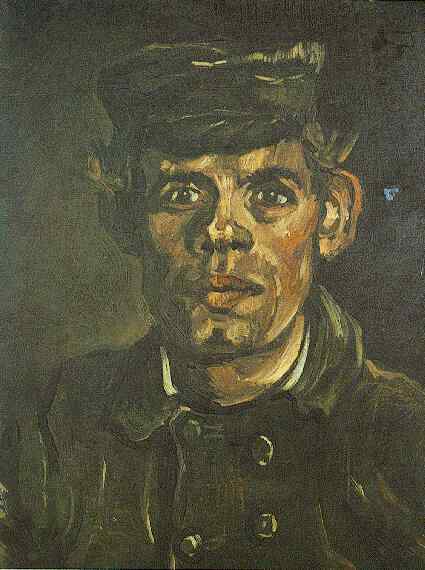
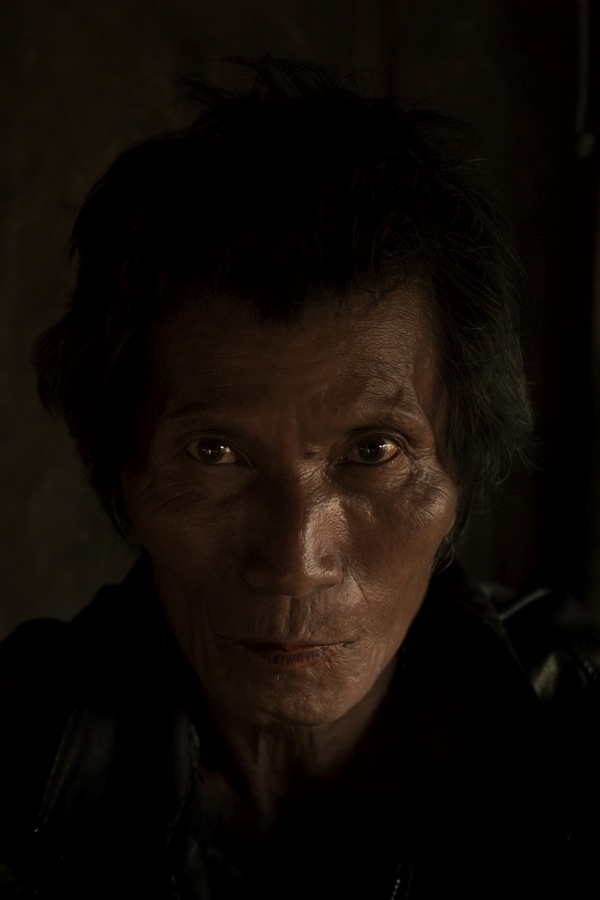

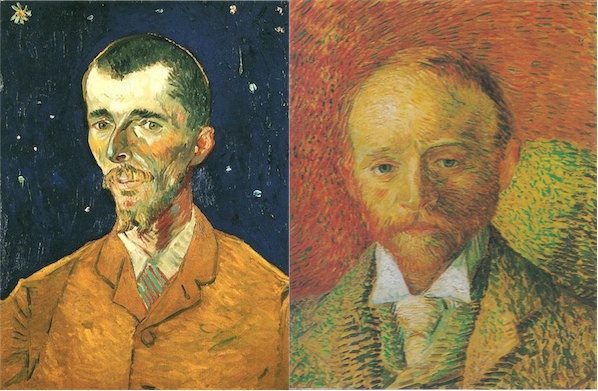

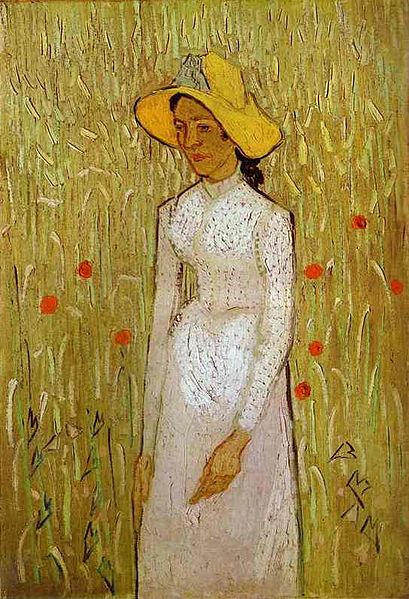
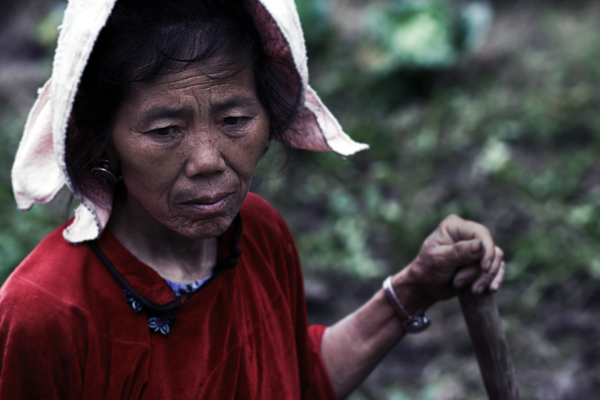
You must be logged in to post a comment.